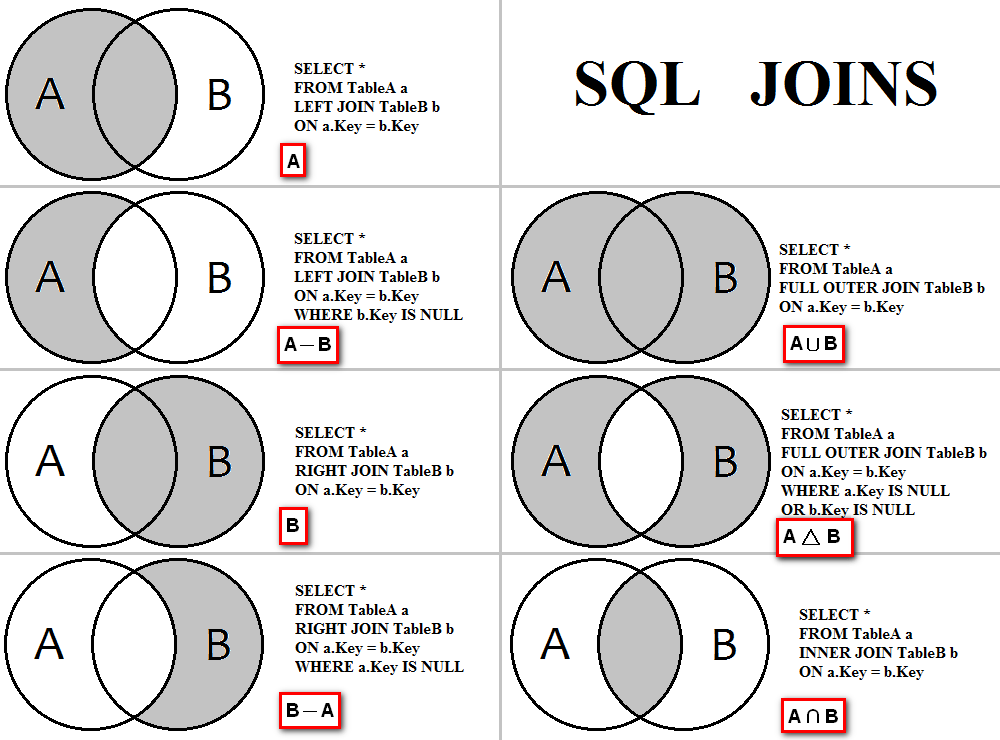OUTER JOIN Queries are a valuable tool in SQL, allowing you to retrieve data from multiple tables. However, like any powerful tool, they come with their own set of challenges and common errors. In this blog post, we’ll explore some of the common errors associated with outer join queries and provide resolutions with practical examples.

Missing Results Due to Improper OUTER JOIN Queries
Not specifying join conditions correctly, leading to missing or unexpected results. Failing to include the OUTER JOIN construct in constant tests, which can cause rows to be omitted.
Resolution: Ensure that your join conditions are correctly specified to match the rows you intend to retrieve.
Example:
— Incorrect join condition SELECT * FROM employees e LEFT JOIN departments d ON e.department_id = d.id WHERE d.id IS NULL; — Corrected join condition SELECT * FROM employees e LEFT JOIN departments d ON e.department_id = d.id WHERE d.id IS NOT NULL OR e.department_id IS NULL;
Ambiguity in Column Names
Not using table aliases or fully qualifying column names when tables have columns with the same name
Resolution: Explicitly specify column names to avoid ambiguity.
Example:
— Ambiguous column names SELECT * FROM employees e LEFT JOIN departments d ON e.department_id = d.id; — Specify column names explicitly SELECT e.employee_id, e.employee_name, d.department_name FROM employees e LEFT JOIN departments d ON e.department_id = d.id;
Misuse of DISTINCT
Unnecessary use of DISTINCT, which can lead to performance issues or unexpected results
Resolution: Review the need for DISTINCT and use it judiciously.
Example:
— Unnecessary use of DISTINCT SELECT DISTINCT e.employee_id, e.employee_name FROM employees e LEFT JOIN departments d ON e.department_id = d.id; — Remove unnecessary DISTINCT SELECT e.employee_id, e.employee_name FROM employees e LEFT JOIN departments d ON e.department_id = d.id;
Incorrect WHERE Conditions
Applying WHERE conditions on columns from the “outer” table after the join, which can inadvertently turn an OUTER JOIN into an INNER JOIN. Using multiple outer joins without careful consideration, potentially creating an unintended full outer join effect
Resolution: Move WHERE conditions on outer table columns to the ON clause of the join to preserve outer join behavior.
Example:
— Incorrect (filters out unmatched customers) SELECT * FROM Customers LEFT OUTER JOIN Orders ON Customers.CustomerID = Orders.CustomerID WHERE Orders.OrderDate > '2023-01-01'; — Correct (preserves unmatched customers) SELECT * FROM Customers LEFT OUTER JOIN Orders ON Customers.CustomerID = Orders.CustomerID AND Orders.OrderDate > '2023-01-01'; -- Condition moved to ON clause
Unexpected NULLs in Result Set
Improper handling of NULL values in the result set, which can affect calculations and aggregations.
Resolution: Use COALESCE or NULLIF to handle NULL values appropriately.
Example: Handling NULLs using COALESCE
— Incorrect (counts NULL as 0) SELECT COUNT(OrderTotal) FROM Customers LEFT OUTER JOIN Orders ON Customers.CustomerID = Orders.CustomerID; — Correct (handles NULL values) SELECT COUNT(COALESCE(OrderTotal, 0)) -- Replaces NULL with 0 for counting FROM Customers LEFT OUTER JOIN Orders ON Customers.CustomerID = Orders.CustomerID;
Unintended Full Join Behavior
Using multiple outer joins without careful consideration can create a full outer join effect, potentially retrieving more rows than intended.
Resolution: Analyze the desired result set and use appropriate join types (left, right, or full) to control the inclusion of rows.
Example:
— Unintended full outer join
SELECT *
FROM Customers C
LEFT OUTER JOIN Orders O ON C.CustomerID = O.CustomerID
LEFT OUTER JOIN Products P ON O.ProductID = P.ProductID;
— Controlled inclusion using different join types
SELECT *
FROM Customers C
LEFT OUTER JOIN Orders O ON C.CustomerID = O.CustomerID
INNER JOIN Products P ON O.ProductID = P.ProductID;
Syntax Errors in Different Database Systems
Using FULL OUTER JOIN syntax in systems that don’t support it (e.g., MySQL)
Resolution: Use a combination of LEFT and RIGHT OUTER JOINs with UNION to simulate FULL OUTER JOIN.
SELECT * FROM TableA
LEFT OUTER JOIN TableB ON TableA.ID = TableB.ID
UNION
SELECT * FROM TableA
RIGHT OUTER JOIN TableB ON TableA.ID = TableB.ID
WHERE TableA.ID IS NULL;
Conclusion
To avoid these mistakes:
- Carefully specify join conditions and use appropriate join types.
- Move filtering conditions for outer-joined tables to the ON clause instead of the WHERE clause.
- Use table aliases and fully qualify column names.
- Consider the need for DISTINCT and use appropriate join conditions.
- Use COALESCE or ISNULL functions to handle NULL values.
- Be aware of syntax differences between database systems.
- Limit columns in SELECT statements and filter early to manage result set size.
- Review queries to remove unnecessary joins.
By conquering these common errors, you’ll transform from an outer join novice to a seasoned data explorer, unearthing valuable insights and extracting the full potential from your queries. For more information on OUTER JOIN Queries with examples click here.
